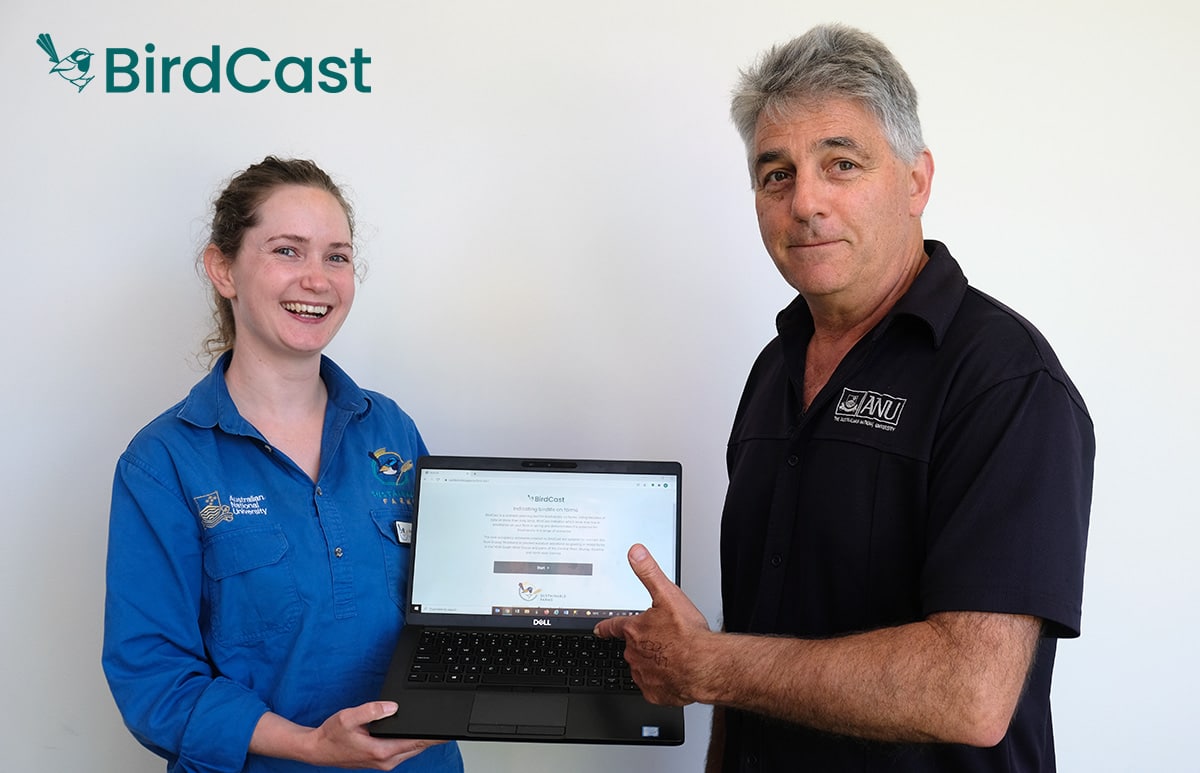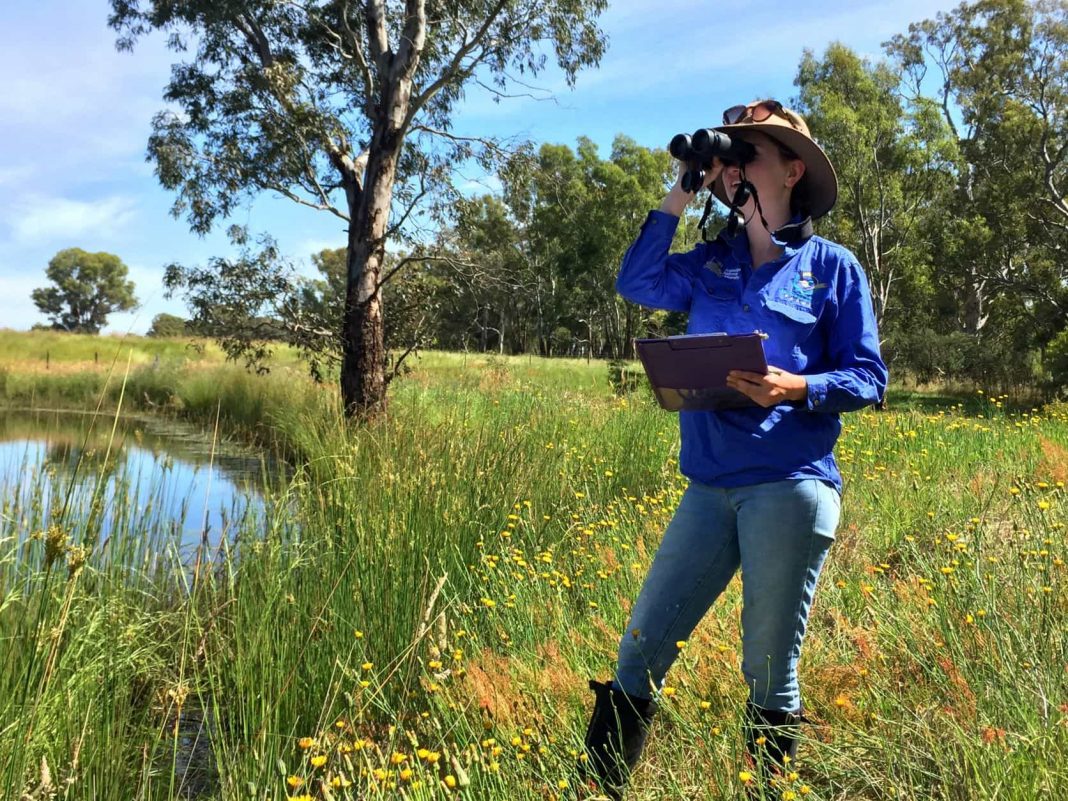ANU scientists and landholders in the grassy woodlands from Orange in NSW to Shepparton in Victoria, have joined together to help save biodiversity on their farms through birdwatching (well, sort of).
ANU’s Sustainable Farms project has developed the first predictive, statistically based, epical tool of its kind called BirdCast. The groundbreaking innovation allows landholders to estimate the occurrence of the birds on-farms farms. With the establishment of biodiversity markets farmers will have the opportunity to receive cash payments for the work in improving biodiversity on their property – a win, win.
The tool has gained notable traction within the Australian scientific community and was recently awarded one of the country’s top science prizes – the Eureka Prize for Applied Environmental Research.

BirdCast utilises 17 years of spring bird data from the woodlands and thousands of observations, along with evaluating the vegetation and factoring in rainfall, temperature, and the presence of noisy miners (not common mynas). It allows farmers to predict what birds they might have in their remnant vegetation patches or shelter belts.
The long-term biodiversity study at the head of BirdCast is the brainchild of conservation ecologist and ANU Sustainable Farms Lead Scientist Professor David Lindenmayer, a world-renowned expert in forest ecology and resource management, conservation science, and biodiversity conservation.
Thanks to Professor Lindenmayer’s research, landholders now have access to previously inaccessible scientific information at their fingertips.
“BirdCast represents a huge opportunity in this space. Satellite imagery is often used to assess vegetation cover as a proxy for biodiversity, but this is an extremely coarse measure,” Professor Lindenmayer said.
“Census-style surveys are important, but we need to have boots on the ground and real data, we need to work with farmers. Tools like BirdCast based on real science are critical.
“Australia has a chance to be a world leader in this space. We have big hopes for BirdCast and the role it can play.”
Project Director of ANU’s Sustainable Farms Michelle Young said it is important landholders have easy access to scientific data that is crucial to understanding how to improve the biodiversity on their land.

“I think that’s a really big achievement in terms of the data is not just in the journals or the academic literature; it’s accessible, it’s accessible now. Anybody can now access that to understand what’s happening on their own property,” Ms Young said.
A crucial element to BirdCast is the ability for farmers to earn income while they work to achieve greater environmental outcomes on their land. Ms Young said people are interested in understanding how farmers can receive payments for environmental improvements.
“Paying farmers for biodiversity credits, it could provide another measure that could be used when people are looking at reporting on their biodiversity. So, there’s going to be a lot of money available to farmers in the future if they can demonstrate the biodiversity values on their property, and this tool might be useful for that,” she said.
“The farmers who can demonstrate that not only are they improving carbon, but they’re improving biodiversity, that’s where they’re going to get a premium payment. A lot of the interventions that will support biodiversity, like putting in new plantings or protecting remnant plantings, etc., they’re also things that have carbon benefits.”
Professor Lindenmayer’s long-term studies in the woodlands are not just unique to Australia, but globally.
Ms Young said there are very few studies that have the length of data collection that BirdCast has readily available with the number of different species including birds, reptiles, vegetation, and mammals.
So, what does this mean to a non-farming Canberran?
Ms Young said Canberra is nestled in the woodlands ecosystem, and by understanding the unique environment around us, we are better prepared to preserve and value it.
“BirdCast provides an insight into the incredible biodiversity that is in woodland areas. A lot of people would be aware that the wheat-sheep belt there is a very highly productive part of our agricultural sector,” she said.
“But it’s also a place where we have remnants of box gum grassy woodland that are these unique ecosystems that have got very special flora and fauna, iconic animals like gliders and koalas and a diverse range of birds.”
The tool also helps to make people aware of the important role farmers have in being stewards of biodiversity.
Anything that raises understanding of that within urban areas is valuable, Ms Young said.

Get all the latest Canberra news, sport, entertainment, lifestyle, competitions and more delivered straight to your inbox with the Canberra Daily Daily Newsletter. Sign up here.



